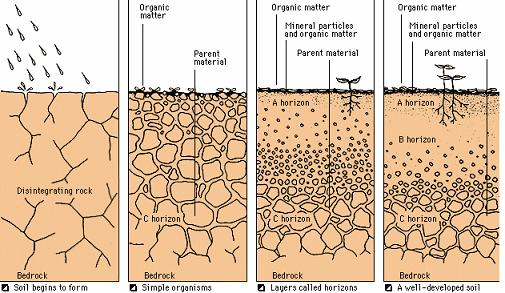
 |
|

Color. Soils range in color from yellow and red to dark brown and black. The color of a soil helps pedologists estimate the amounts of air, water, organic matter, and certain elements in the soil. For example, a red color may indicate that iron compounds are present in the soil.
|
|
|---|